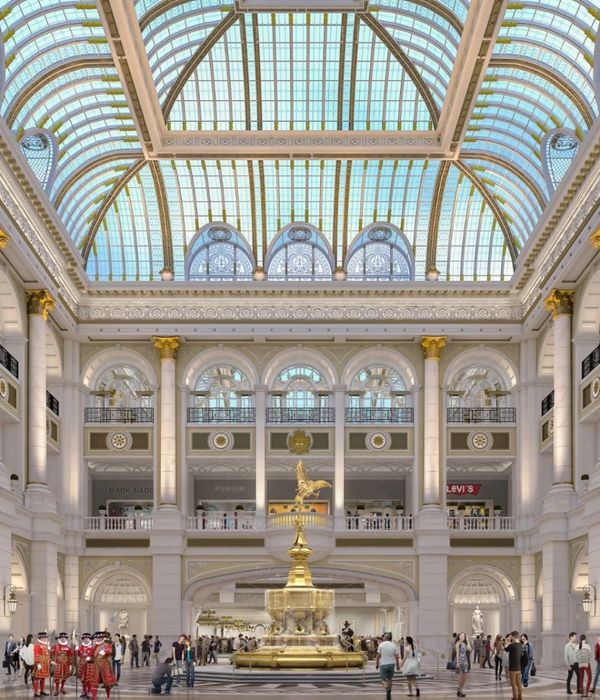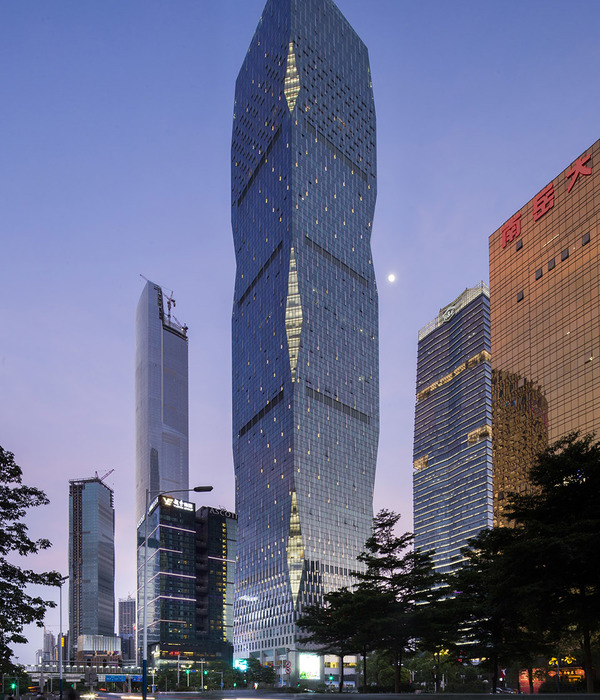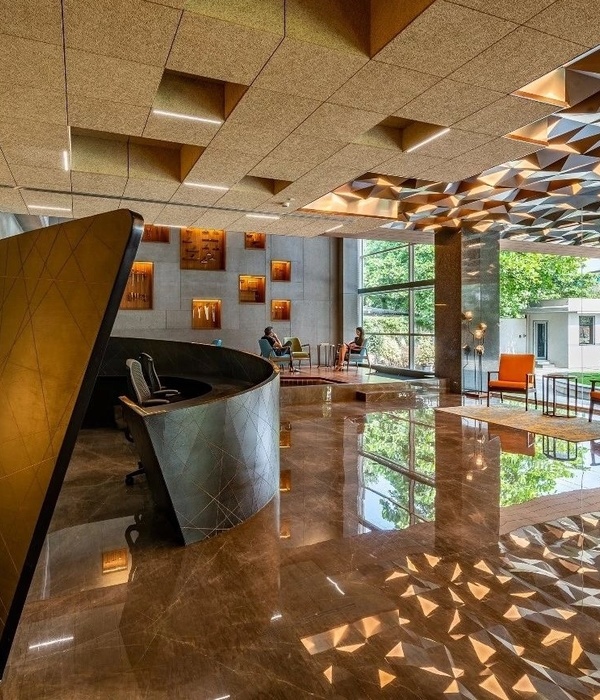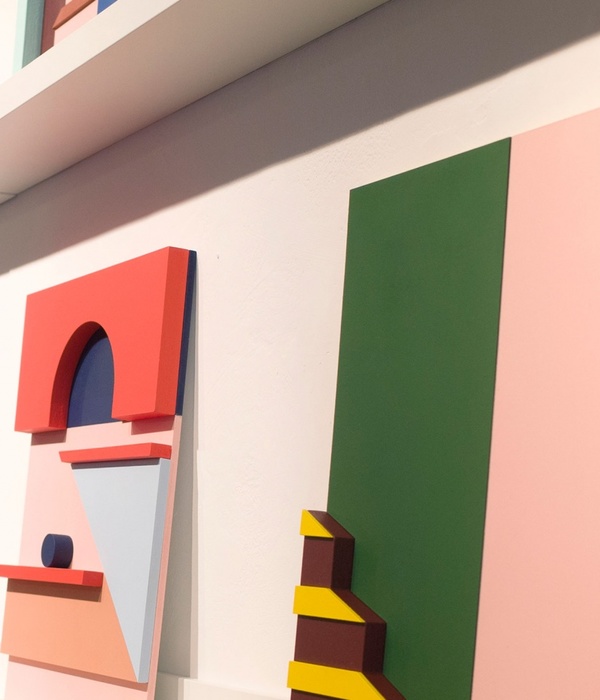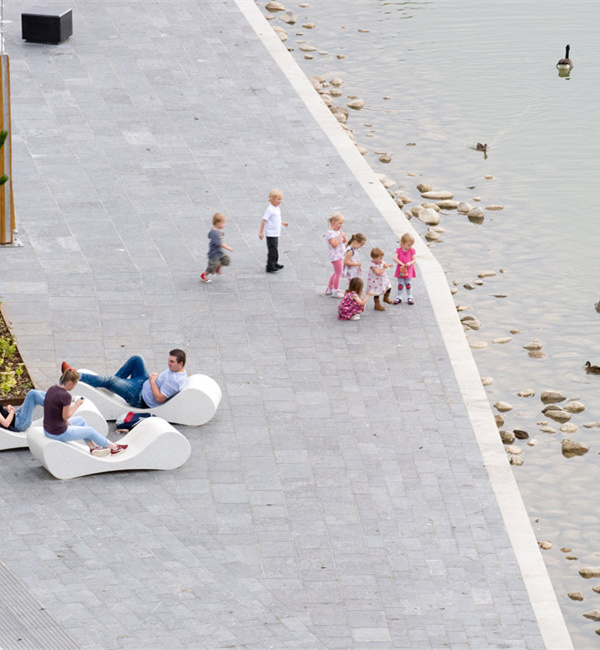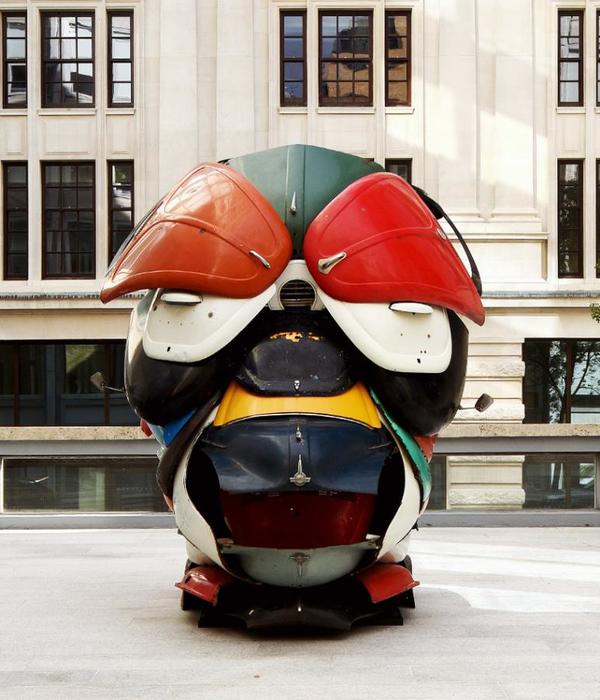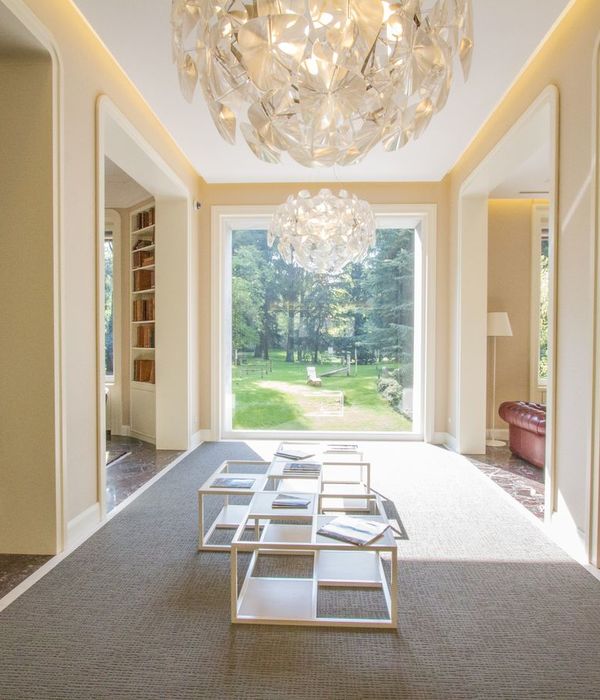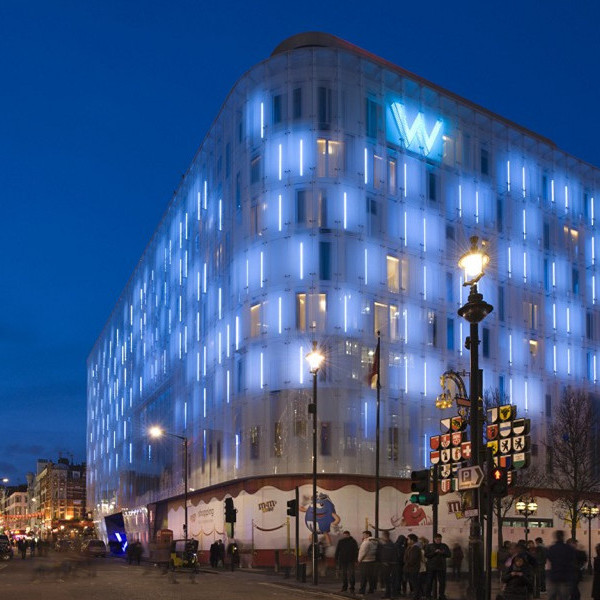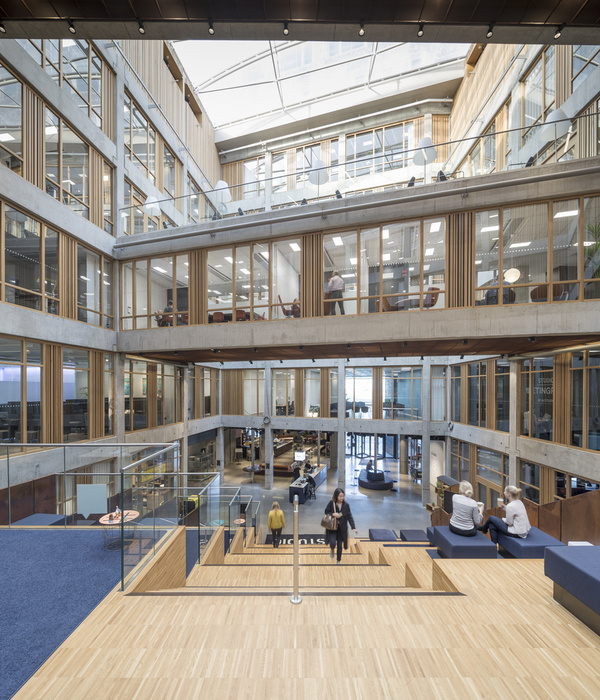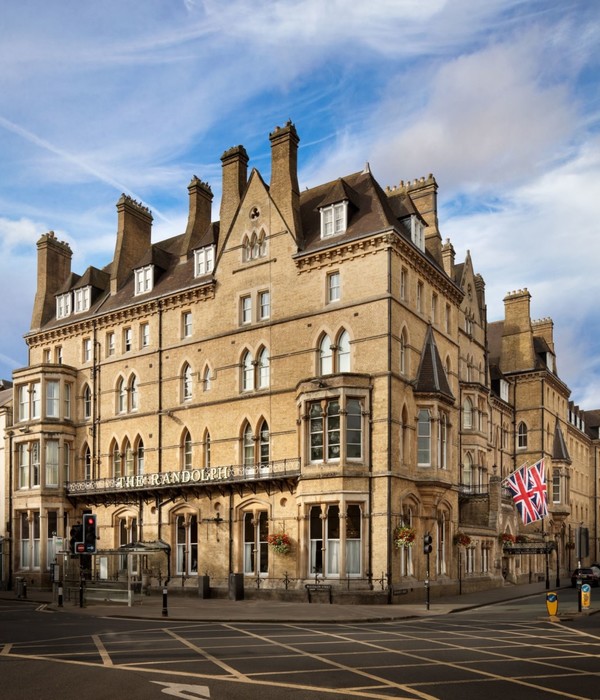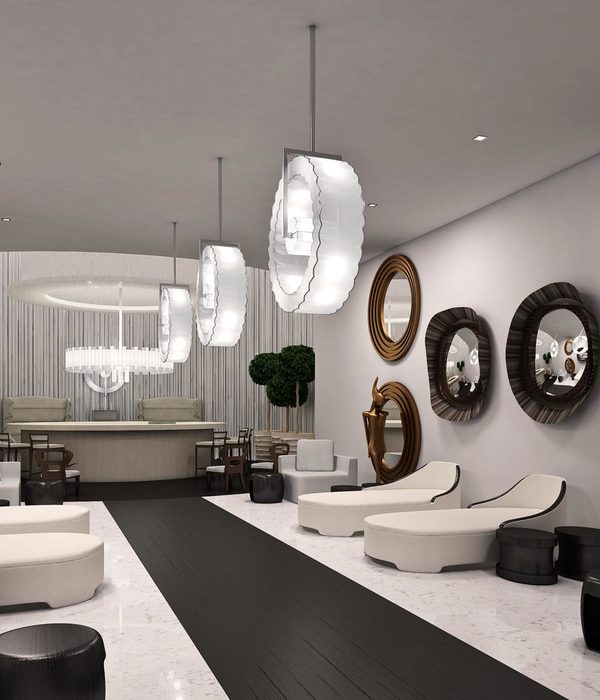日本北海道木材高层酒店,呈现原生态风情
本项目是日本首座采用混合木材建造的高层酒店,设计旨在最大限度地利用当地材料,以“体验北海道”为理念,从建筑本身到酒店管理,从建筑材料到酒店内提供的食物,项目中涉及的所有材料都原产于北海道。
This design for Japan’s first hybrid timber high-rise hotel aims to maximize the use of local materials. With a concept of “experience Hokkaido,” the hotel features materials made and grown in the prefecture in everything from the building itself to the hotel’s management, construction materials to food.
▼项目鸟瞰–酒店坐落于札幌市中心,The building is in downtown Sapporo (bird’s-eye view)
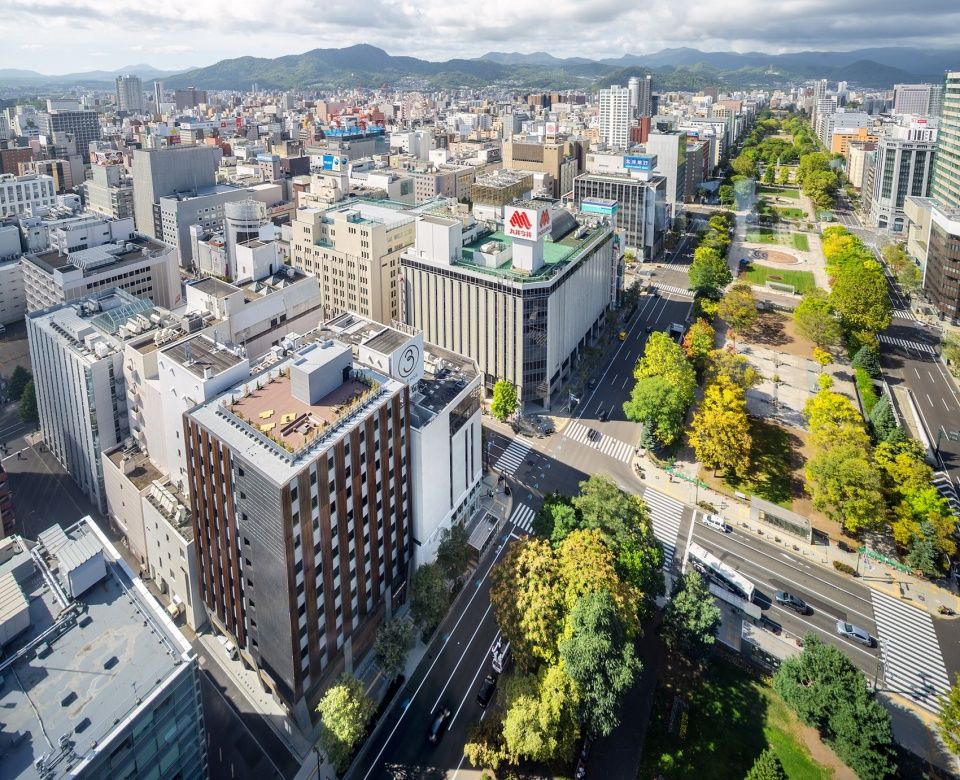
▼东北方向鸟瞰–建筑面向札幌大通公园,The building faces Sapporo Odori Park (exterior viewed from the northeast)
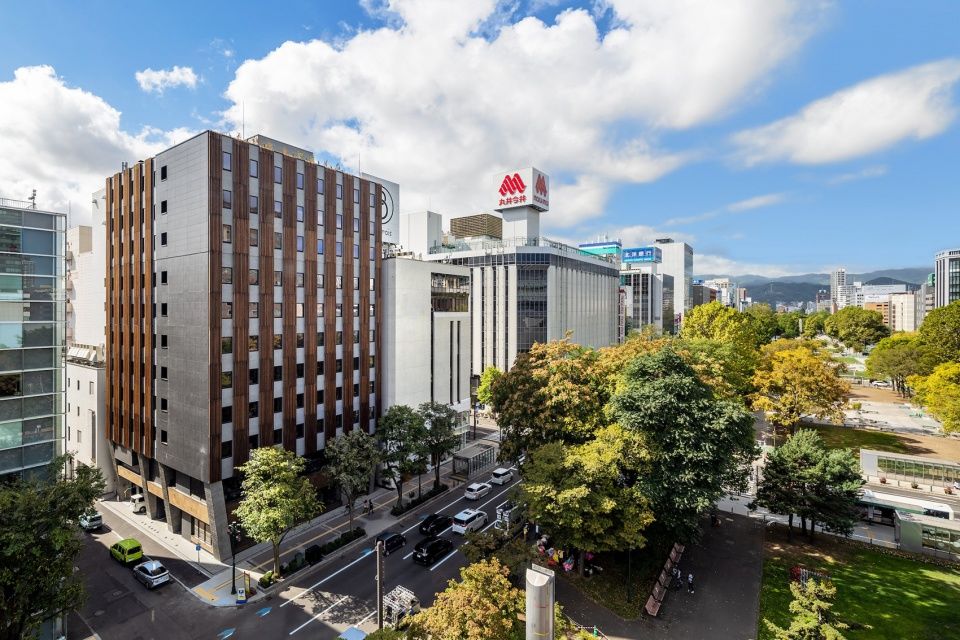
项目的设计秉承了以下四条原则:1. 采用北海道原生木材,保证当地人工林可以继续可持续地出产木材并再生循环。
2. 将建筑废物和二氧化碳排放量减至最低,并采取其他措施保护环境。
3. 通过使用当地生长的木材,同时与当地企业展开合作来刺激当地工业的发展。
4. 除了提供酒店住宿空间之外,还要为社区创造向公众开放的场所,以促进当地文化。
The following four principles guided the project:1. Use timber harvested in Hokkaido so that mature plantation forests can continue a sustainable cycle of use and regeneration.
2. Reduce construction waste and CO2 emissions to an absolute minimum and take other measures to protect the environment.
3. Stimulate local industry by using locally grown timber and working with local businesses.
4. Beyond simply providing hotel accommodations, contribute to the community by creating a place that is open to the public and promotes culture.
▼北立面 – 木材制成的百叶,The north side, clad in louvers made of Hokkaido wood
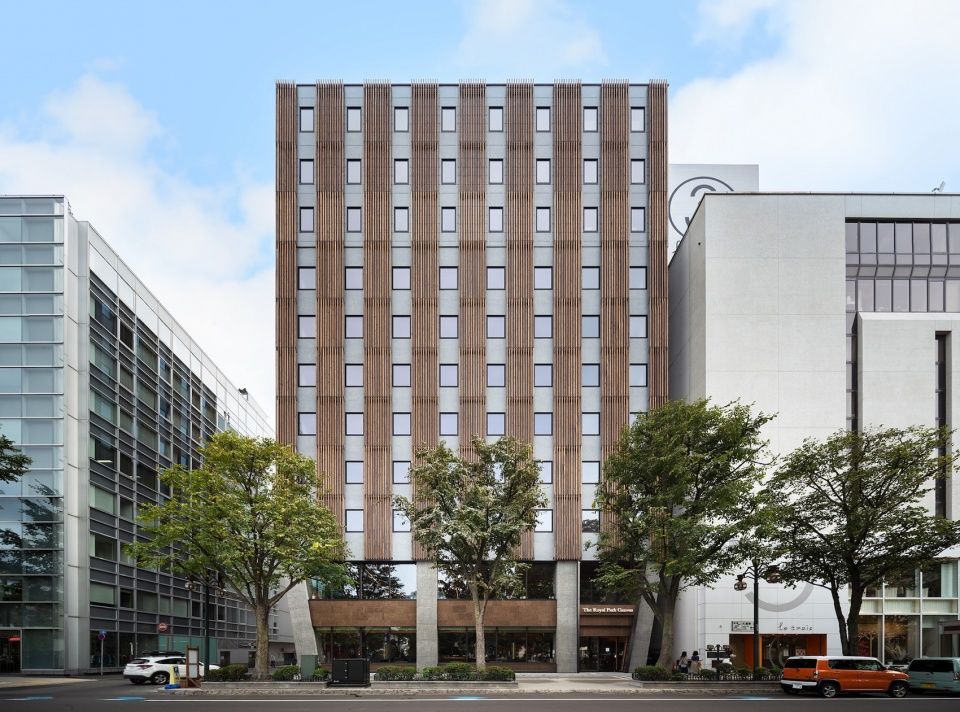
▼北侧较低的楼层使用碳化软木包层,Carbonized cork cladding is used on the lower levels of the north side
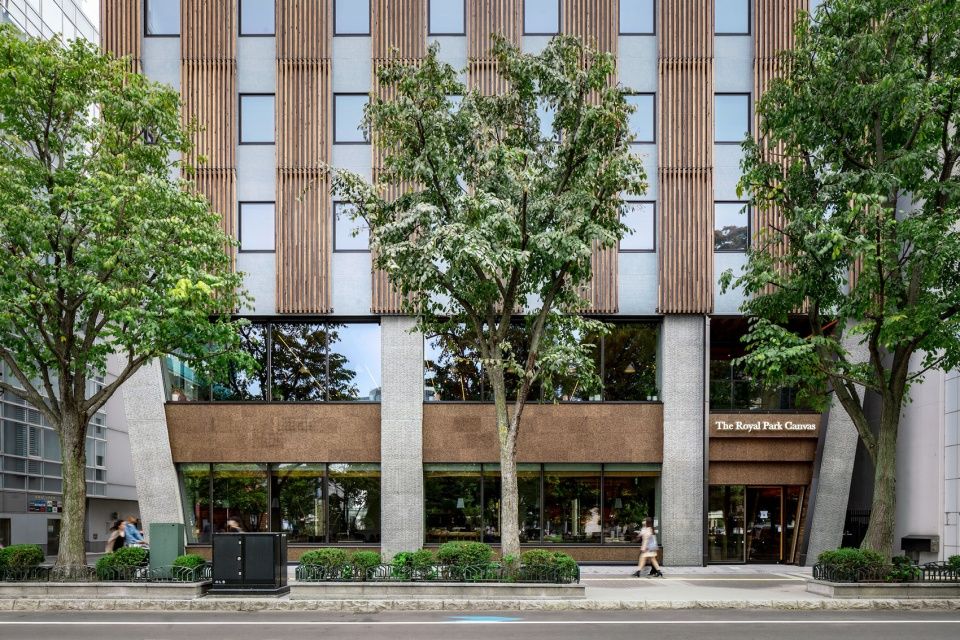
日本在地震和消防安全方面有着极其严格的建筑标准,对于高层建筑来说更是如此。然而,近年来由于规范的更新,在满足某些条件的情况下,建筑师们终于可以采用木材来建造高层建筑。先进的技术则是采用木材和混合木材建造高层建筑的先决条件。本项目就是一栋混合木造高层建筑,地下室至八层使用钢筋混凝土框架,部分八层楼板采用了交叉叠层木板,而九到十一层以及建筑的屋顶结构则采用了木制框架。
Japan has extremely strict building standards related to earthquake and fire safety, particularly for high-rise buildings. In recent years, however, new standards have been added allowing the construction of timber high-rises, provided certain conditions are met. Timber and hybrid timber high-rise architecture requires advanced technology. The present building is hybrid, utilizing a reinforced concrete frame from the basement through eighth story (with cross-laminated timber [CLT] used for part of the eighth-story flooring) and a wood frame on the ninth through eleventh stories and rooftop structure.
▼北侧与东侧底部楼层设有大面积开窗,The lower levels on the north and east sides have large windows facing Odori Park
▼立面细部,the louvers made from Hokkaido wood
为了将木材作为内外饰面材料,同时减少混凝土模板的浪费,建筑师开发了一种附带钢筋的固定模板系统用于混凝土楼层的客房中。从外立面上看,经过热处理的木制百叶窗和碳化的软木墙包裹了整栋建筑,使建筑的外观能够随着时间的推移发生色彩的变化。该建筑总共使用了1200多立方米的木材,其中80%以上是库页岛冷杉、日本落叶松、日本开花白蜡树和北海道生产的其他类型木材。
Aiming to also incorporate wood as an interior/exterior finish and reduce waste from concrete formwork, we developed stay-in-place board formwork with attached steel reinforcing rods for use in guestrooms on the concrete stories. In the façade, heat-treated wooden louvers and carbonized cork wall covering create an exterior intended to change color over time. Altogether, more than 1,200 m3of lumber was used in the building, over eighty percent of which is Sakhalin fir, Japanese larch, Japanese flowering ash, and other types of wood produced in Hokkaido.
前厅 – 饰面由立面百叶剩余的木材制成,The vestibule, finished with remnants from the exterior wooden louvers
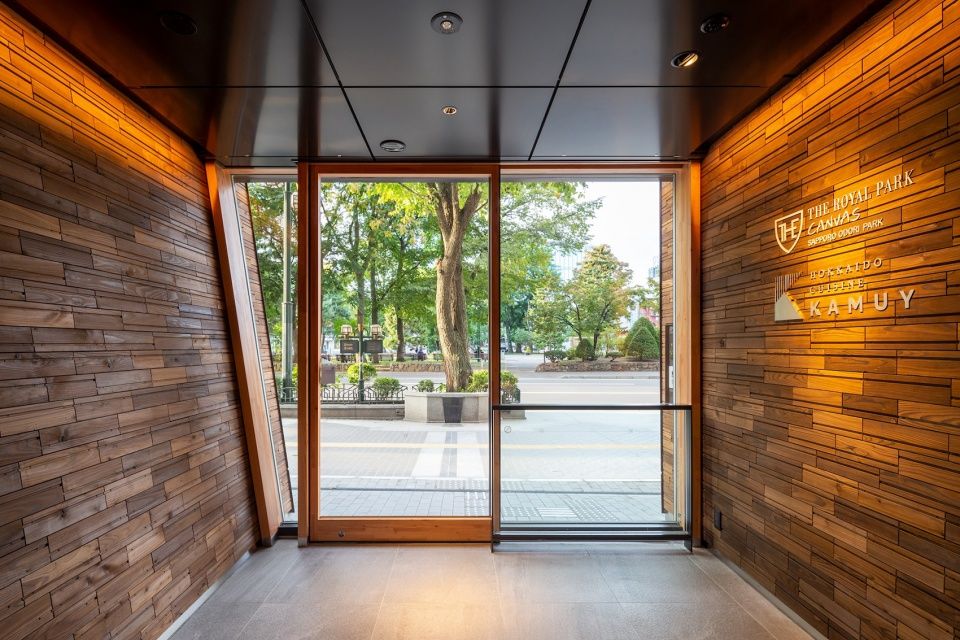
▼向公众开放的综合接待区和酒吧/休息室,The combined reception area and bar/lounge, which is open to the public, overlooks Odori Park
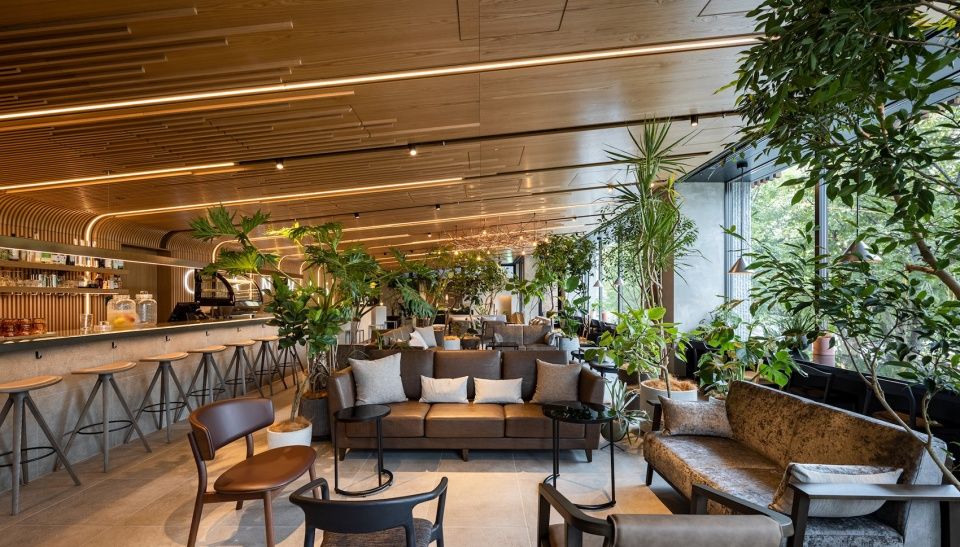
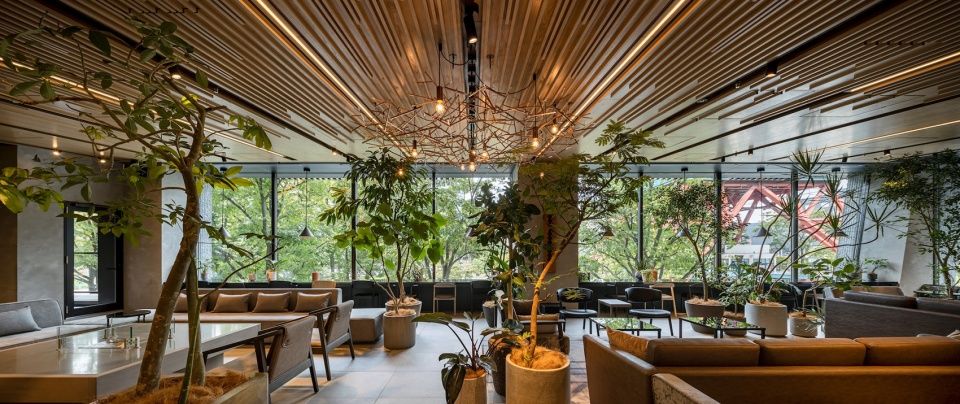
▼倾斜的北海道木制天花板与弧形边缘的综合接待区,The sloped Hokkaido-wood ceiling with rounded edges is a prominent feature of the combined reception area and bar/lounge
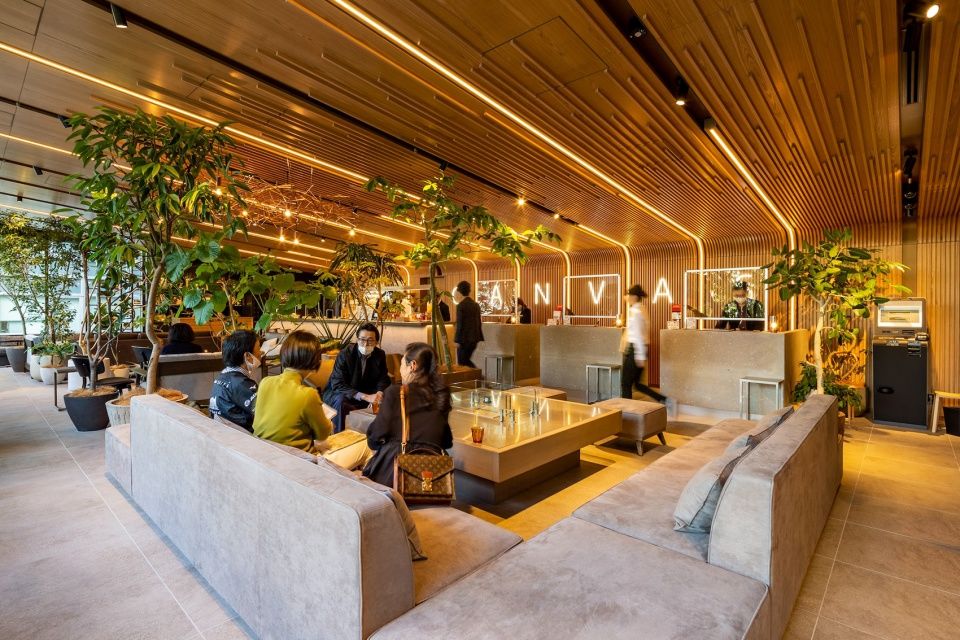
接待区中从墙壁延伸到天花板的线性照明以及由北海道石材制成的柜台,The reception area is defined by lighting that extends from the walls to the ceiling and a counter made from Hokkaido stone
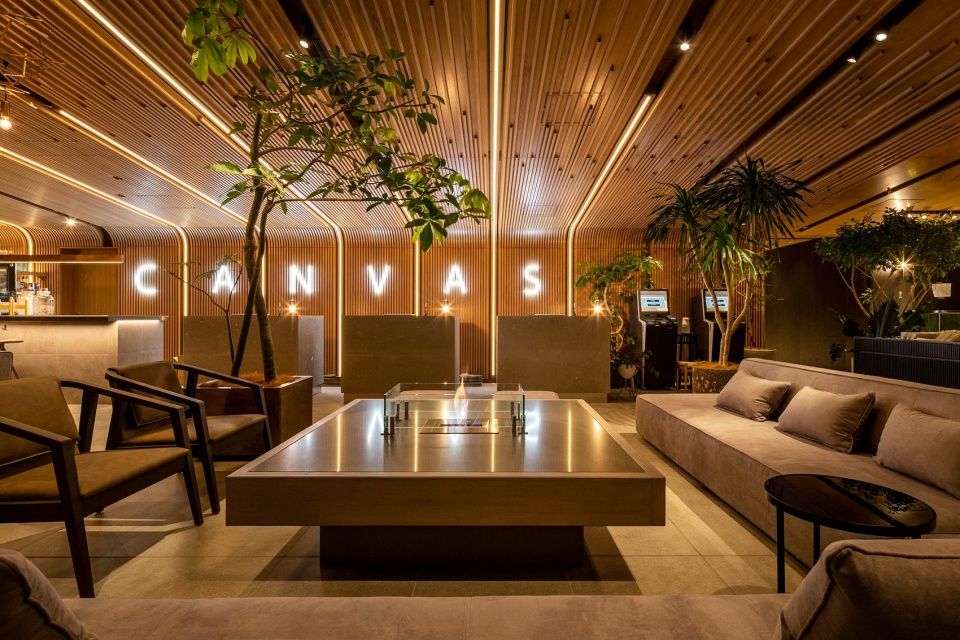
▼底层餐厅供应北海道当地特产餐饮,The restaurant on the first floor serves food and alchohol produced in Hokkaido
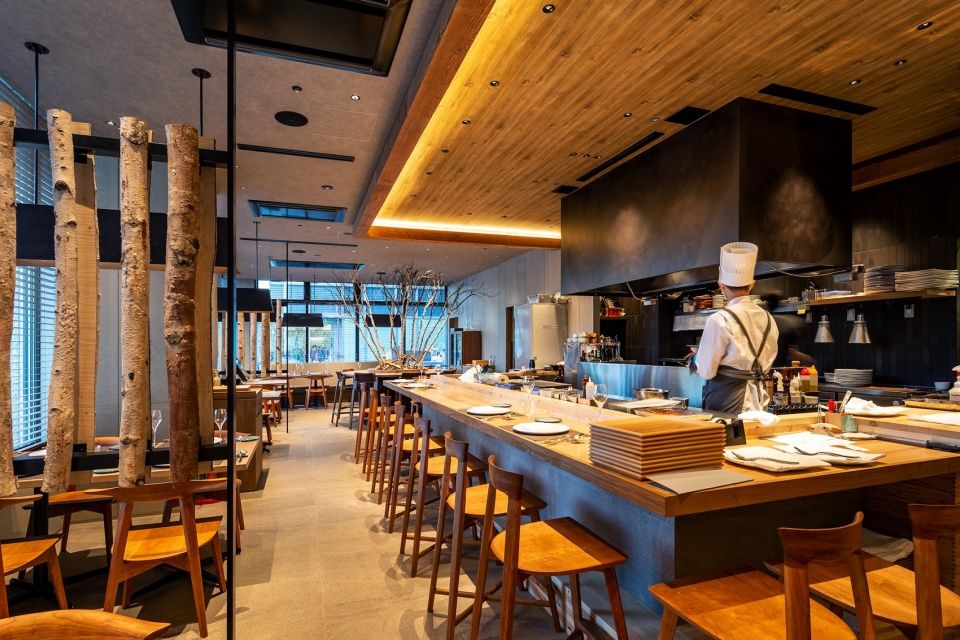
▼由北海道木材制成的楼梯,The stairs in the entryway atrium are made from Hokkaido wood
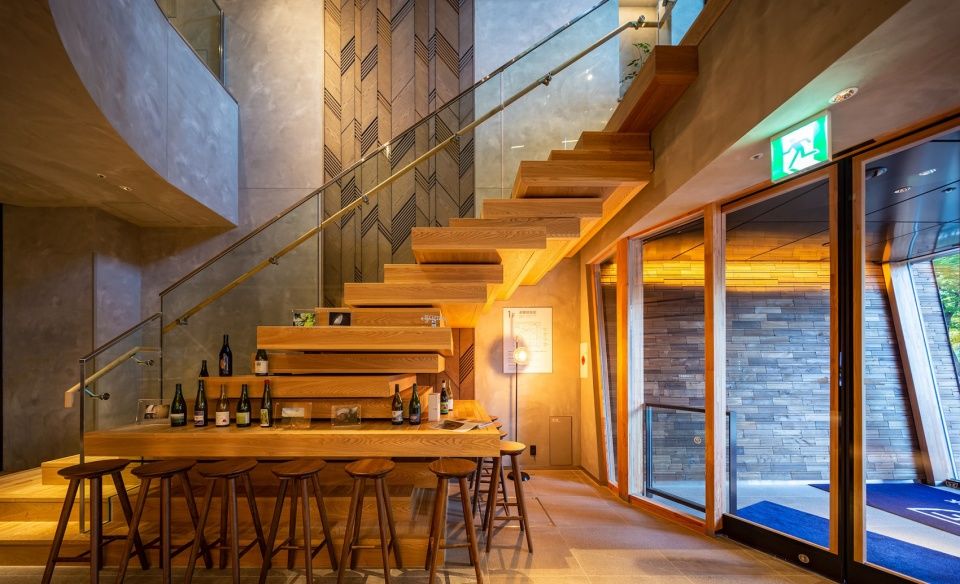

与整栋建筑都采用钢筋混凝土相比,木材的使用使本项目减少了约1383吨的二氧化碳排放量。此外,建筑师还采取了其他措施使本项目更加可持续,例如回收利用外立面百叶的剩余木材制作CLT室内饰面。为了实现最大限度利用当地材料的目标,项目中不仅使用了北海道木材,还采用了该县生产的许多其他产品。该举措刺激了当地工业,为当地公司引进尖端技术并开发新产品创造出绝佳的机会。
客房楼层走廊,In this hallway on a guestroom floor
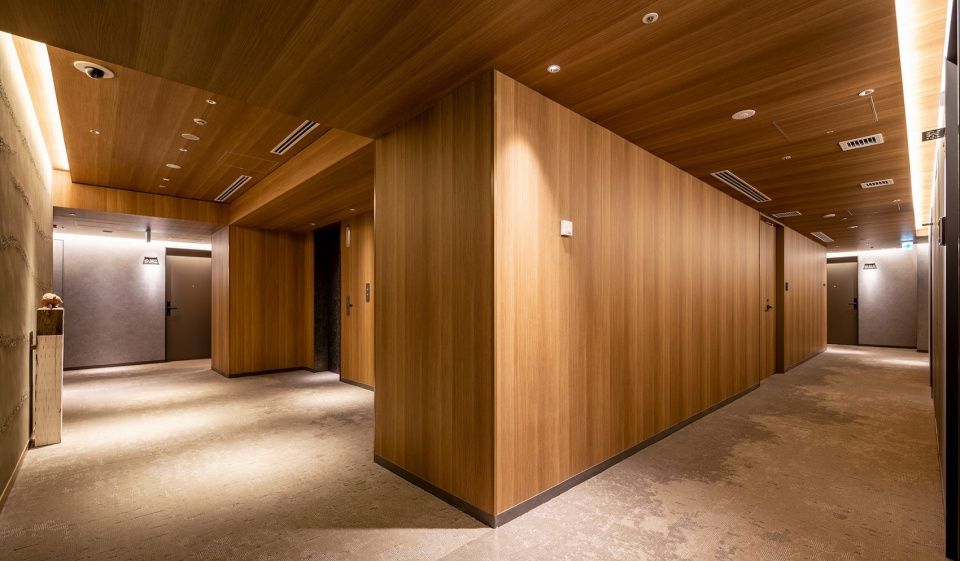
套房从地板到天花板都使用北海道木材,Thesuite using Hokkaido wood from floor to ceiling
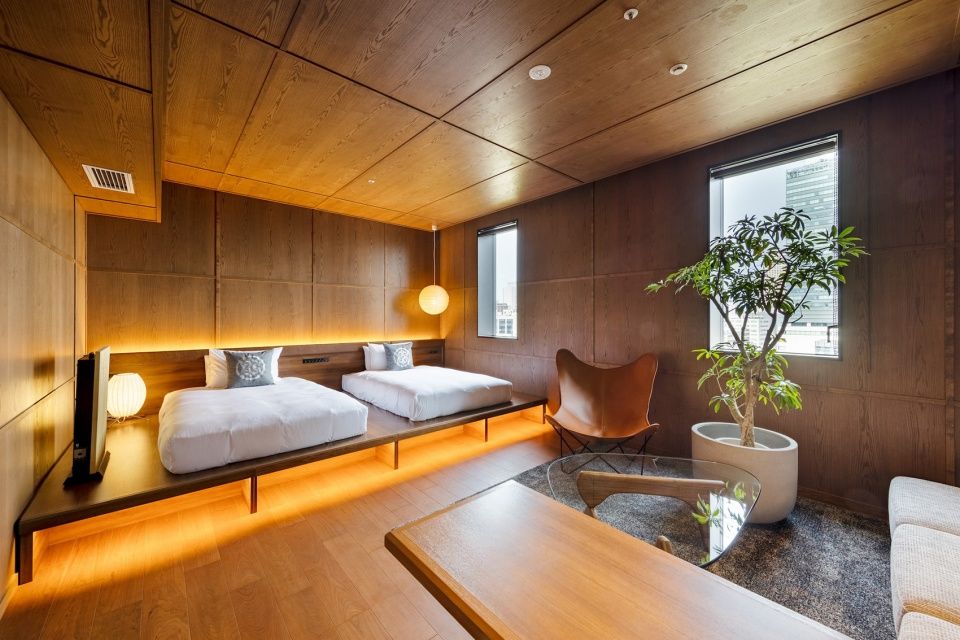
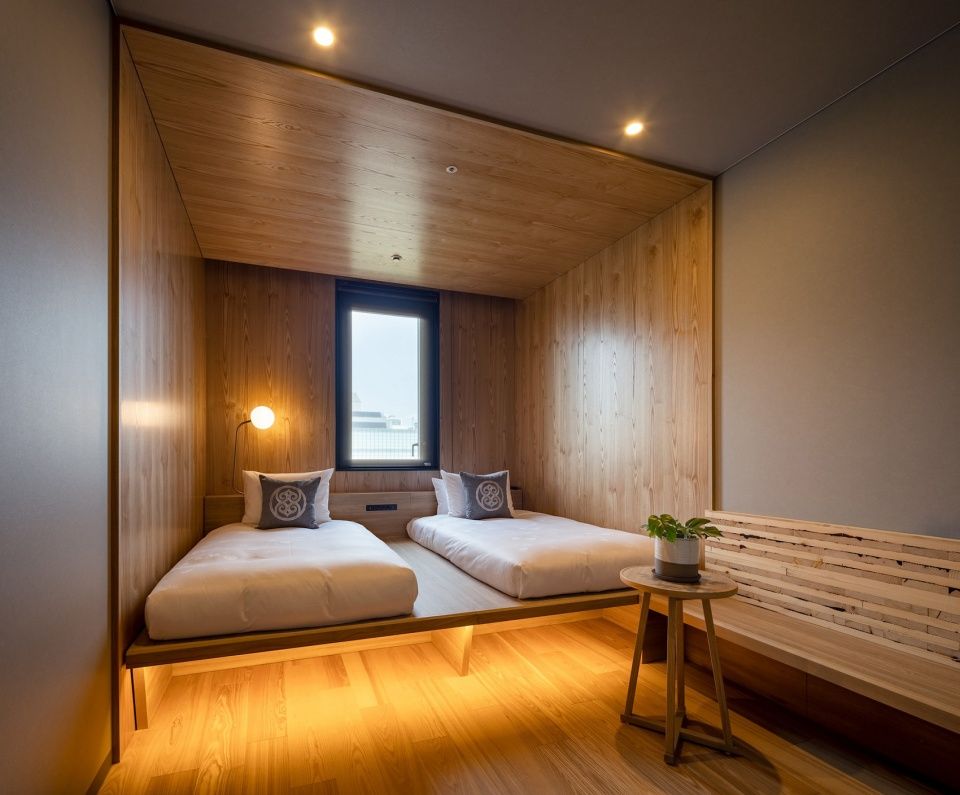
▼客房天花板采用北海道木材制作的固定板模板,This guestroom ceiling uses stay-in-place board formwork made with Hokkaido wood
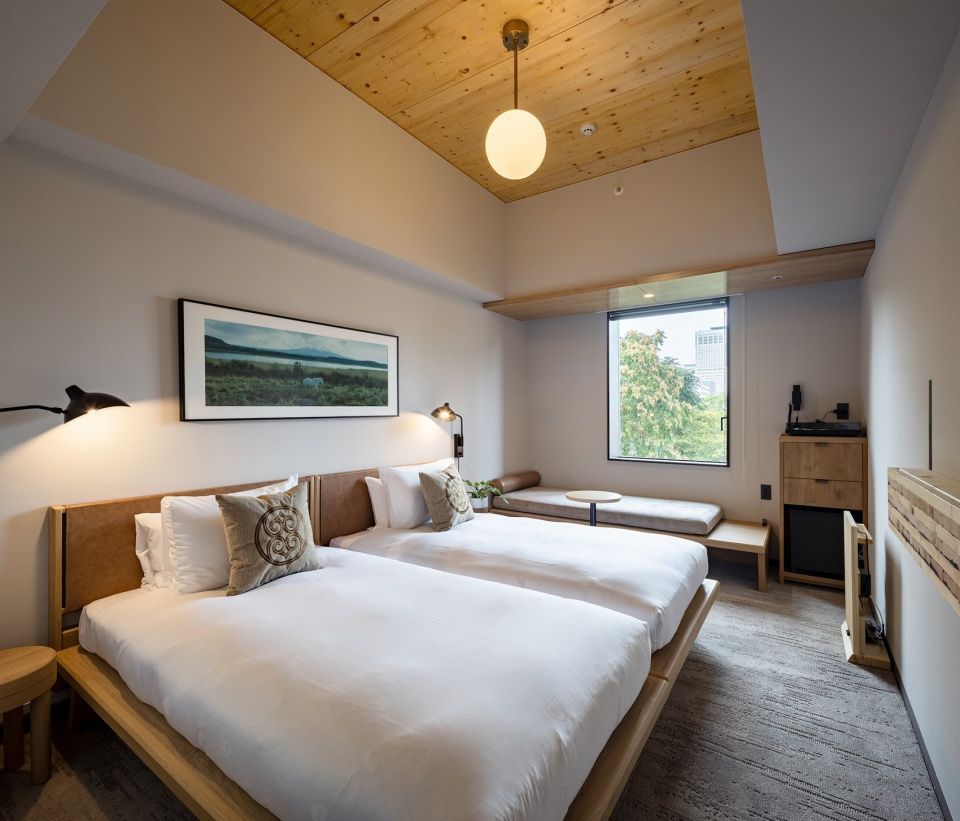
客房家具使用了建筑CLT结构的剩余木材,Guest room furniture made using remnants from the building’s CLT structure
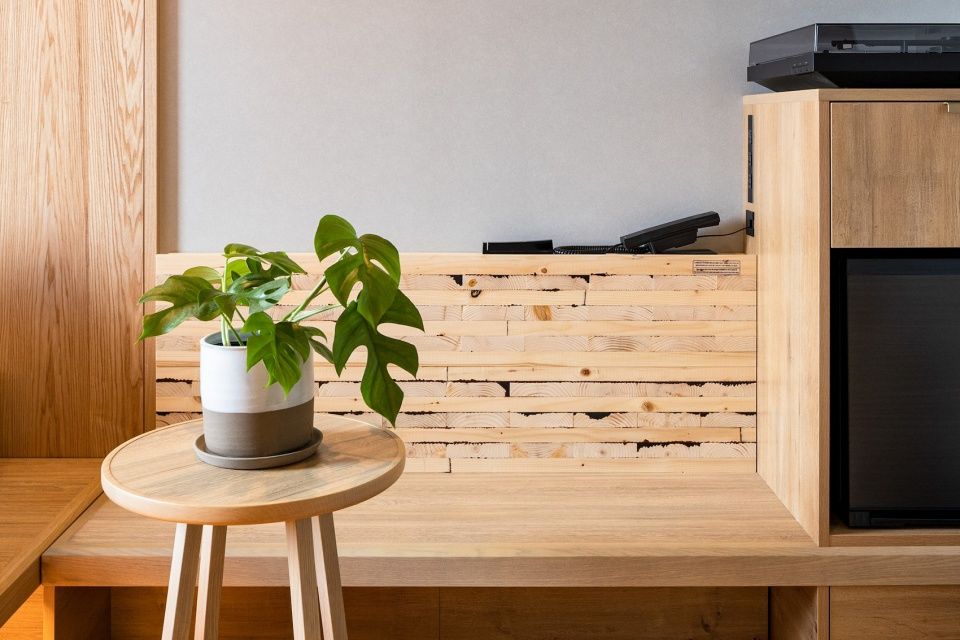
此外,由于酒店的游客来自日本和世界各地,本地艺术家以及制造商对本项目的积极参与,能够有效地推广本地文化并实现社区的振兴。目前,酒店二楼的休息室以及屋顶露台对公众开放,并会定期举行各种活动。本地大学生会前来酒店参观,周围邻居也会过来询问关于使用木材建造新建筑的建议,随着时间的推移,越来越多的人与酒店联系在一起,使其逐渐成为社区中心。
In addition, because people visit the hotel from all over Japan and the world, actively involving local artists and manufacturers is an effective way of promoting local culture and revitalizing the community. Currently, the second-floor lounge and the rooftop are open to the public and events are held regularly. As university students visit to view the architecture, neighbors stop by to ask advice on new projects using wood, and more people become connected to the hotel, it is gradually becoming a community hub.
▼建筑栋北侧夜景,Night view of the north and east sides
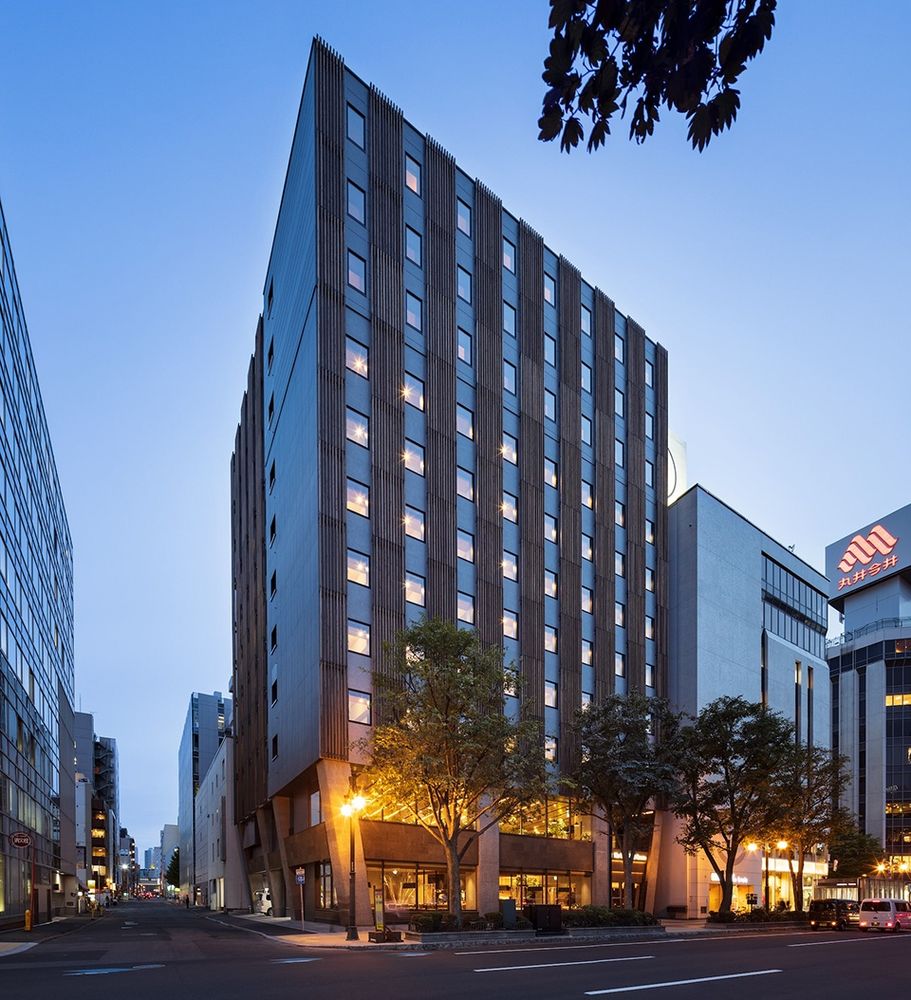
▼北立面入口夜景,Night view of the lower levels on the north side, with wood interiors visible from Odori Park

Project Outline
Name: TheRoyal Park Canvas Sapporo Odori Park
Location: 1-12, Odorinishi, Chuo-ku, Sapporo, Hokkaido, Japan
Principal Use: Hotel, Restaurant
Structure:Under ground: Concrete
Above ground (1~7F): Concrete
Above ground (8F):Concrete + Timber
Above ground (9F~11F):Timber
Site Area: 695.51 ㎡Building Area: 580.62 ㎡
Total Floor Area: 6,157.06 ㎡
Height: 46.14 mCompletion: August 2021Credit Information
Architect: Mitsubishi Jisho Design
Photographer: Kawasumi – Kobayashi Kenji Photograph Office
Project Team:Owner / Developer: Mitsubishi Estate Co., Ltd.
Interior Architects / Designers: Mitsubishi Jisho Design Inc., NOMURA Co., Ltd.
Structural Engineers: Mitsubishi Jisho Design Inc.
MEP Engineers: Mitsubishi Jisho Design Inc.
Project Managers: Mitsubishi Jisho Design Inc.
Main Contractors: Shimizu Corporation
Lighting design: Mitsubishi Jisho Design Inc.,NOMURA Co., Ltd.


